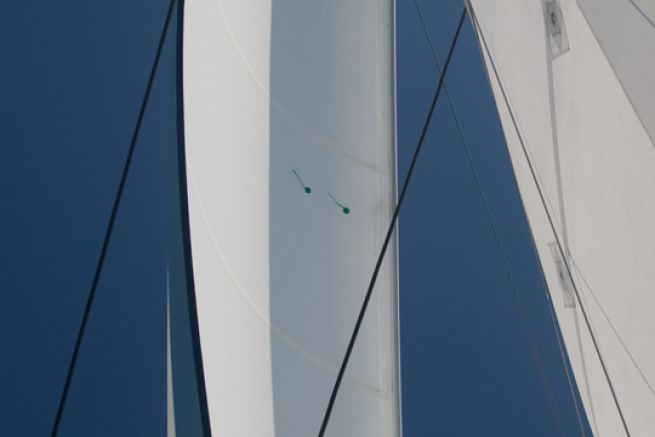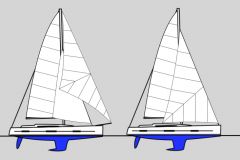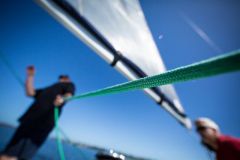The sail of a sailboat works like an airplane wing. For it to be effective, the air must circulate freely on each side with clean flows. The danger (and the brake) is turbulence. Penons, kinds of wool strands glued on each side of the sail, materialize these flows.
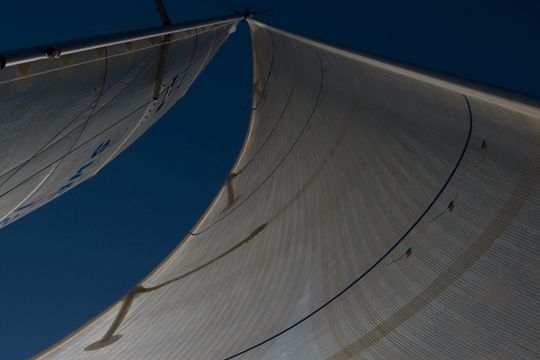
The jib penons
These are the main indicators to assist the helmsman or jib trimmer. The wool strands are glued on each side of the sail along the luff. Be careful not to install them too close to the forestay which can cause turbulence (reel tube or carabiners).
To differentiate the 2 penons, we choose well differentiated colors (often red and green) and we shift the penons so that the one under the sail is distinguished well from the first by transparency. To have a perfect reading of the settings on the whole sail, we place at least three series of penons along the luff.
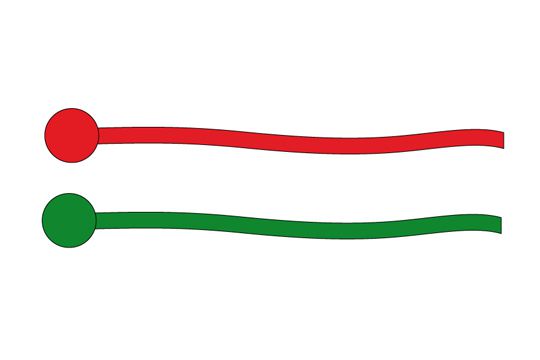
Let's pen straight
The jib is correctly adjusted. Wind and leeward penons are not disturbed. They are horizontal. The flow on the sail is laminar.
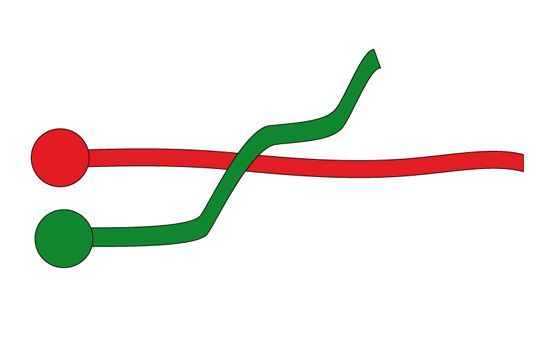
Penon in the wind disturbed
The jib is not tucked in enough or the helmsman too much. The penon in the wind (inside the sail) rises and comes off. It tends to stir.
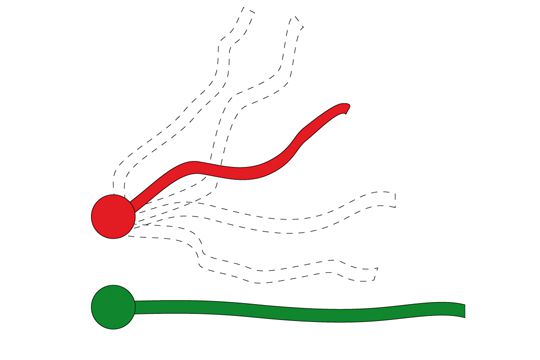
Penon leeward disturbed
The jib is too tucked in or the helmsman has shot down too much. The leeward penon is disturbed and undulating caught in turbulent air.
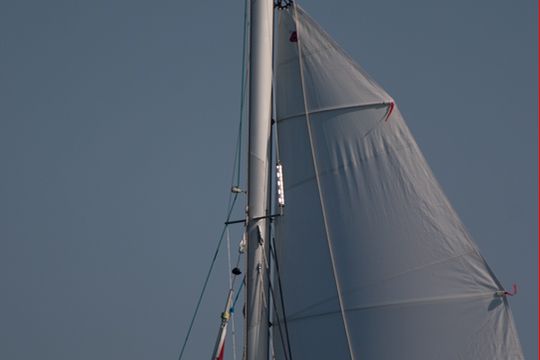
Mainsail penons
On the mainsail the penons are placed on the waterfall. They allow laminar flows to be read over the entire height of the sail. They are used less by the helmsman than jib penons but by the mainsail trimmer who can act with the sheet or the carriage.

 /
/ 